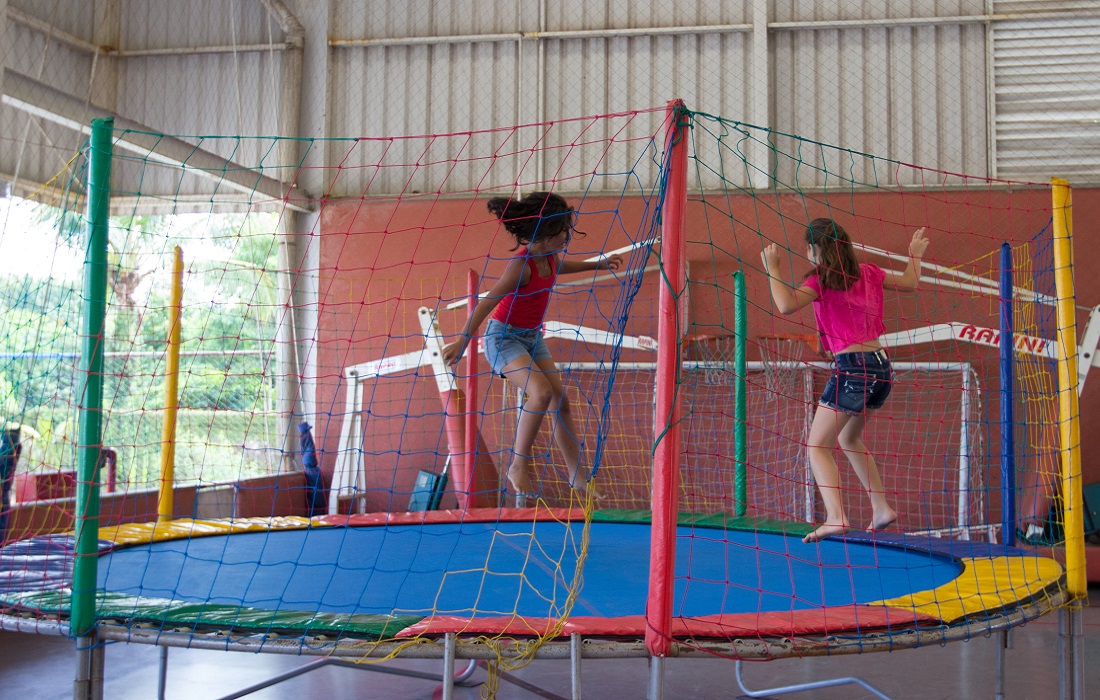The quintessentially joyful act of bouncing on a trampoline transcends mere physical activity, presenting a multifaceted platform for the enhancement of crucial cognitive functions in children. Beyond the bounds of physical vigour, trampoline play emerges as a pivotal stimulant for cognitive faculties such as attention span, memory recall, and problem-solving prowess. In the British setting, where emphasis on holistic development in early childhood education is paramount, integrating activities like trampoline 6ft play—especially on apparatuses like the 6ft trampoline for younger or more space-constrained scenarios, and the 8ft trampoline with enclosure for a safer, more expansive play area—into children’s routines is gaining commendation for its dual-purpose benefits.
Cognitive Development: The British Perspective
Cognitive development encompasses the evolution of thinking, problem-solving, and learning aptitude in children. This facet of development is sculpted by both genetic endowments and environmental stimuli, with the latter including the physical activities in which children partake. In Britain, the educational framework increasingly recognises the significance of integrating physical activity with cognitive development strategies, advocating for play-based learning environments that challenge both the body and mind.
Physical Activity and Cognitive Enhancement: A Closer Look
Physical activity, particularly that which engages children in a joyous and challenging manner such as trampoline bouncing, plays a critical role in stimulating cognitive development. Such activity not only augments cerebral blood flow but also enhances the neural connections within the brain, thereby improving overall brain function. Trampoline play, with its inherent need for balance, coordination, and spatial awareness, offers a unique challenge to the developing child’s brain.
Delving Deeper: The Cognitive Advantages of Trampoline Play
- Heightened Concentration and Focus: The act of maintaining balance and coordinating movements on a trampoline necessitates a high degree of concentration and focus, thus fostering an enhanced capacity for attention in educational settings and beyond.
- Memory Enhancement: The repetitive nature of jumping and the creation of games or sequences on the trampoline serve to bolster both short-term and long-term memory, providing a fun yet effective method of cognitive training.
- Augmented Problem-Solving Skills: Trampoline play encourages children to continuously adapt to new physical challenges, thereby not only enhancing their physical agility but also enriching their problem-solving skills and creativity.
- Spatial Awareness: Regular engagement with trampoline activities aids in developing a more nuanced understanding of spatial relationships, crucial for both physical and cognitive development.
The British Emphasis on Safety and Trampoline Types
In Britain, where safety standards are rigorously upheld, the selection of a trampoline must be guided by both size and safety considerations. A 6ft trampoline is often recommended for younger children or smaller gardens, ensuring that the joy of bouncing is accessible without compromising on safety. For older children or those with a bit more space, an 8ft trampoline with an enclosure offers an expanded area for play while the enclosure provides an added layer of safety, preventing accidental falls.
Maximising Benefits: Practical Guidance
- Establishing Safety Protocols: Emphasising the importance of safety through clear, adhered-to guidelines ensures that trampoline play remains a beneficial activity. This includes rules around the number of participants and the types of activities conducted.
- Active Supervision: Particularly for younger children, active supervision by adults not only ensures adherence to safety protocols but also encourages the development of new skills and challenges.
- Structured Play and Learning: Incorporating structured games and learning activities into trampoline time can further enhance cognitive benefits, making playtime both enjoyable and educationally fruitful.
- Regular Engagement: The cognitive benefits of trampoline play are most pronounced with regular engagement. Encouraging daily use, where feasible, as part of a balanced routine of activities, can maximise the developmental benefits for children.
Conclusion
Trampoline play, with a particular emphasis on apparatuses like the 6ft and 8ft trampolines equipped with safety enclosures, offers a compelling avenue for the enhancement of cognitive skills among British children. Marrying the exhilaration of physical activity with the stimulation of cognitive development, trampoline play stands out as a multifaceted tool for fostering both the physical and intellectual growth of children. By adhering to stringent safety guidelines and integrating structured, cognitively enriching activities into playtime, parents and educators can leverage the benefits of trampoline play to support holistic child.


